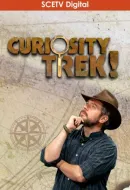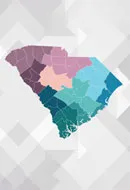Charles Williams is an artist from Georgetown, South Carolina. He graduated from the Savannah College of Art and Design with a Bachelor of Fine Arts in Graphic Design and Advertising, and currently attends the University of North Carolina in Greensboro, where he will be receiving a Masters in Visual Arts. One of his major focuses right now is creating exhibitions. His exhibit Put Your Hands Where My Eyes Can See was showcased in the Elizabeth Dunlap Patrick gallery at Winthrop University in Rock Hill this fall. South Carolina ETV provides you with a small gimpse into his creative process.
Charles Williams discusses two paintings. The first is RIOTER - July 24, 1964. Williams spent a lot of time with his grandfather as a child. He explains how that played a vital role in his creative process: "I picked this image based off of the use of the hands, going back to the essence of my grandfather. He couldn't read or write, and so his way of establishing trust was that he would look a man or woman in their eyes and shake their hands firmly, and that would establish trust. So, I took that approach of looking at the emotions that are evoked through the hands to pick out these historical photos and use the photos for a reference to paint from." Williams continues, "You see the policeman has his arm and his hands around the black male's neck, and when you're squeezing a person, the blood rushes to a specific body part, and so in this case, I wanted to emphasize pain and him being choked and squeezed, but then also, the helpless vulnerability that his body is in. So you'll see the white and discoloration of his skin, as well as the vulnerability within his hands, but then also, too, the white and what that emphasizes for me is a spiritual, religious aspect, so those are the decision makings I made within this piece."
The second painting Williams discusses is NOW - 1976. He explains the scene: "The young man was pulled over and assaulted by cops and again, choosing this image because of the use of his hands and emotions that he's confined and not able to move...I wanted to show the double play of emotions from his face as well as the hands. And so, talking to different people in the community, as well as elsewhere, that these police brutality incidents have happened. They're feeling distressed, they're feeling hopeless, they're feeling frustrated. Angry, but then also, they're in fear."





